A compact crossover with a hybrid powertrain should hit the sweet spot for many buyers. And Toyota is the master with hybrids. Yet the company's first stab at a RAV4 Hybrid underwhelmed, with EPA ratings of just 34 mpg city and 30 mpg highway. In a suburban test drive the best trip computer average I could wring out of one was 38 mpg. The styling and suspension tuning of the 2016-2018 RAV4 Hybrid were also iffy.
For 2019, Toyota fully designed the RAV4 and reengineered the Hybrid's powertrain. Is the second iteration more impressive?
Nissan offers the only other compact crossover hybrid for 2019. But with EPA ratings of 31/34, the Rogue Hybrid barely competes with the original RAV4 Hybrid, much less the new one. Plus the current Rogue dates from 2014.
For 2020 a redesigned Ford Escape will be offered in hybrid and plug-in hybrid forms. While the Ford could be more competitive than the Nissan, it won't be available until the third quarter of 2019.
So I'm going to compare the RAV4 Hybrid to a non-hybrid. A few months before the 2019 RAV4 reached dealers, my sister strongly considered a new Prius then bought a 2019 Subaru Forester. Should she have waited? Is the new RAV4 at least as good as the new Forester, while also offering the fuel economy people expect from a hybrid?
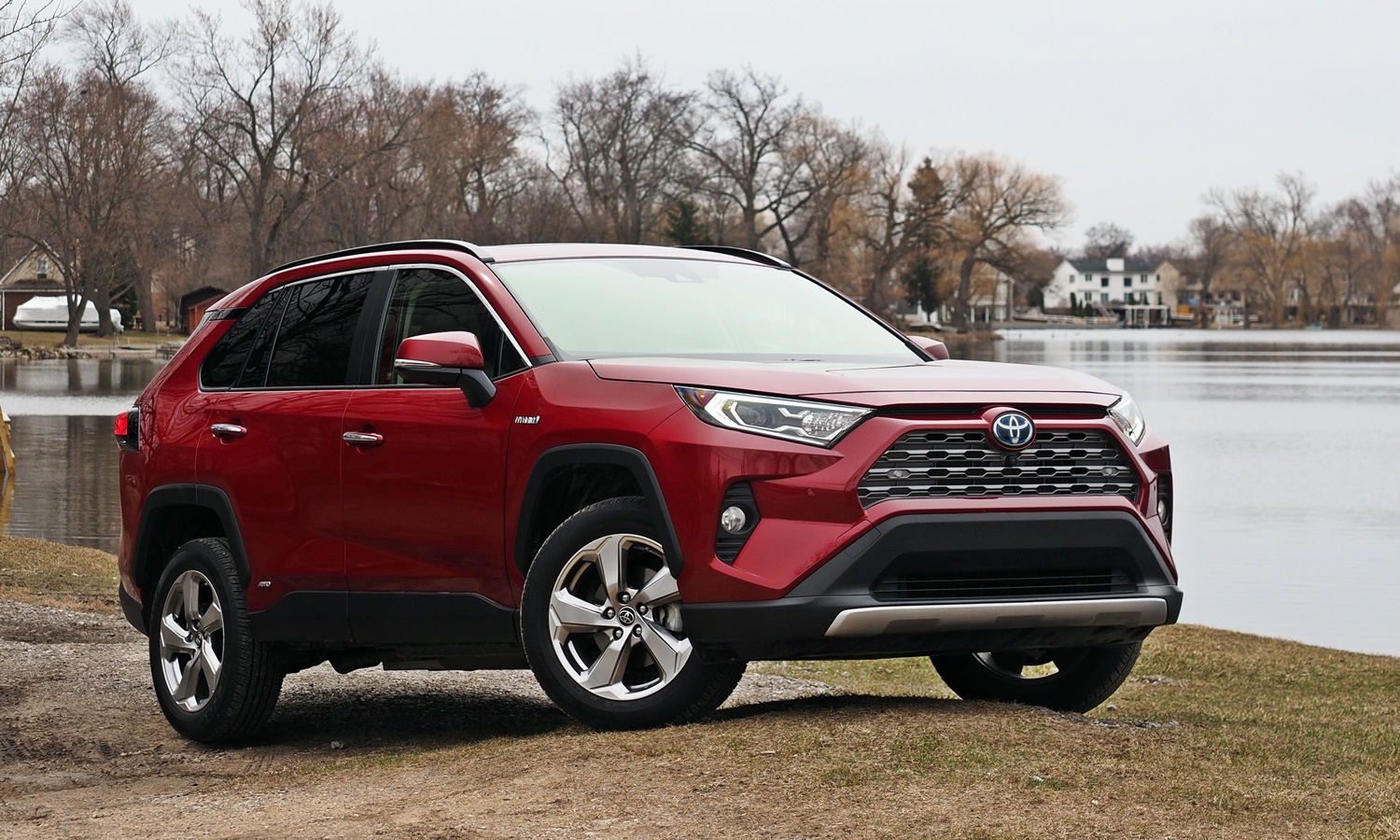
The new RAV4 appears much more rugged than the previous one. It also appears larger, but isn't. more RAV4 photos
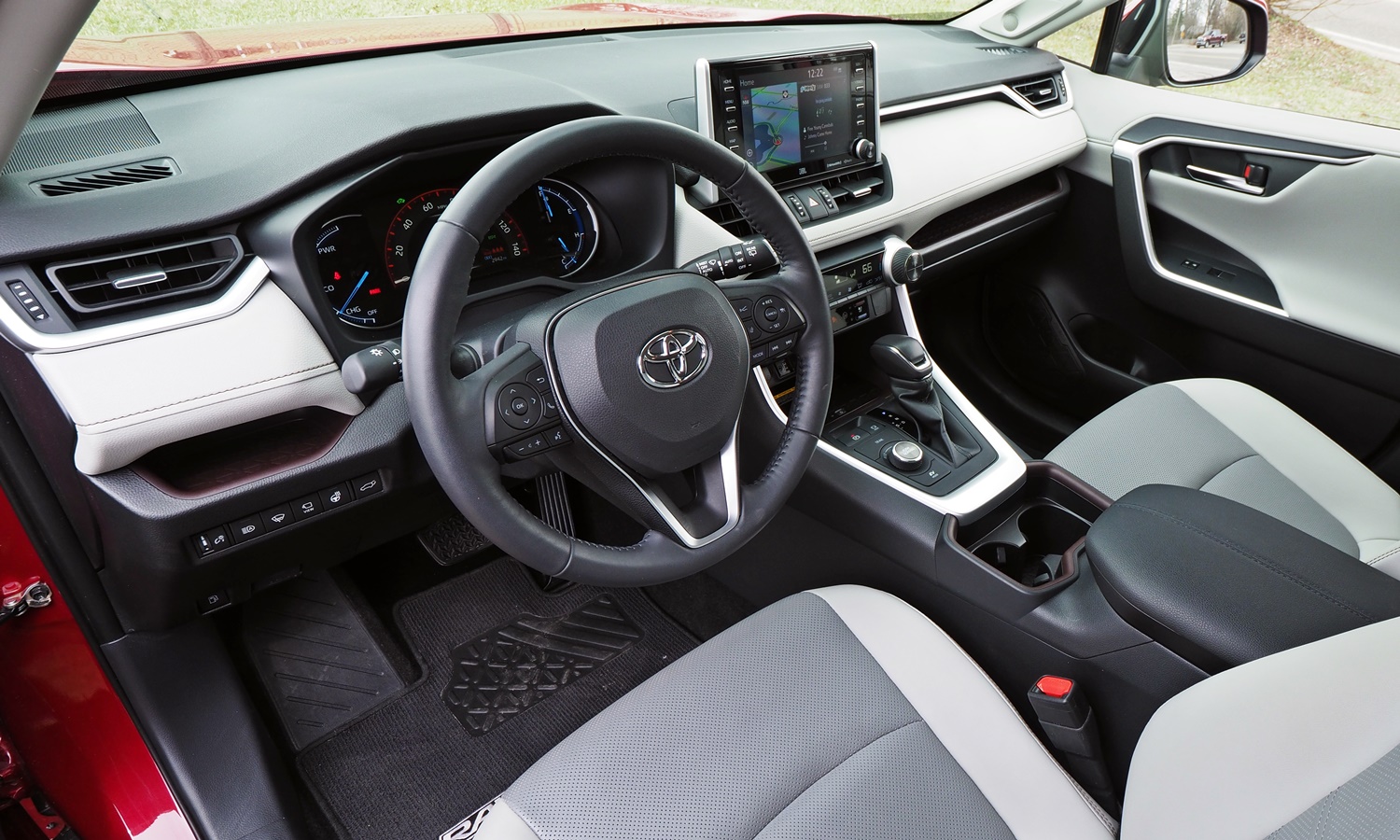
The new interior has a much more cohesive design. Interesting rubber touch points.
| |
Compared to the Forester |
| Fuel economy |
 Better
Worse
Better
Worse
|
Toyota improved the RAV4 Hybrid's fuel economy dramatically with the redesign. The model's EPA highway rating has surged from 30 to 38 mpg, while its city rating has jumped from 34 to 41 mpg. In suburban driving I easily achieved trip computer averages in the low 40s, with a max of 50. On a 70-mph highway I observed averages from 35 to 38 mpg. While still much less efficient than a Prius, which is lighter and lower, the RAV4 now delivers the fuel economy people expect from a hybrid.
With all-wheel-drive (standard on the Hybrid), the non-hybrid RAV4 manages EPA ratings of 25 city and 33 highway. The Subaru Forester achieves similar marks, 26/33. So the new RAV4 Hybrid earns its keep, especially in city driving.
A Kia Niro goes farther on a gallon of gas, but is considerably smaller than the RAV4 and isn't offered with AWD.
| Reliability & durability |
 Better
Worse
Better
Worse
|
The longer you're likely to keep a car, the more you'll benefit from the reliability of a Toyota. These days most cars will be reliable for four-to-six years (something to keep in mind when viewing scores or rankings based on the first few years of ownership). The Subaru Forester should be in the same ballpark as a Toyota for perhaps eight years. But once the odometer spins into six digits, a Toyota is your best bet.
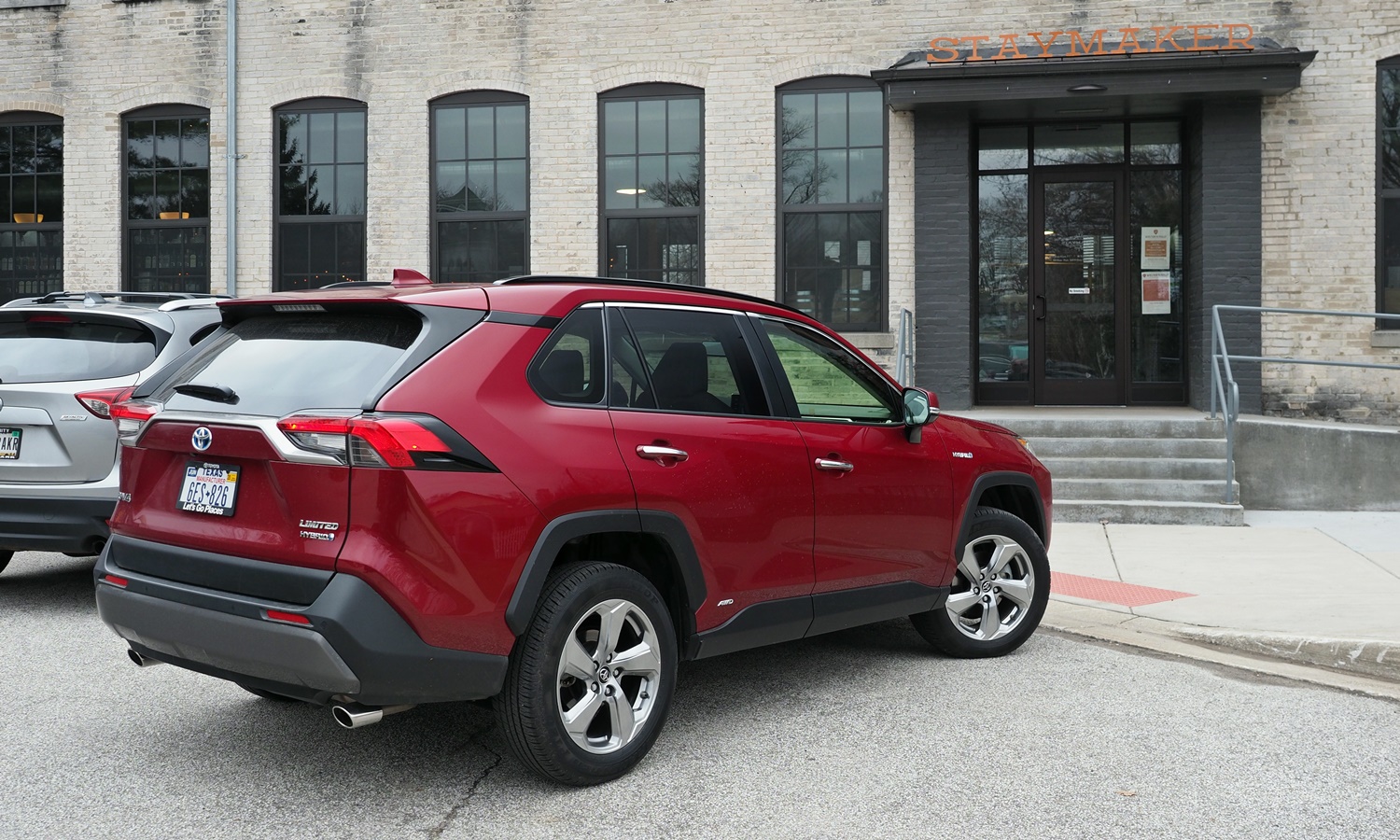
Character lines in the rear pillar form an arrow.
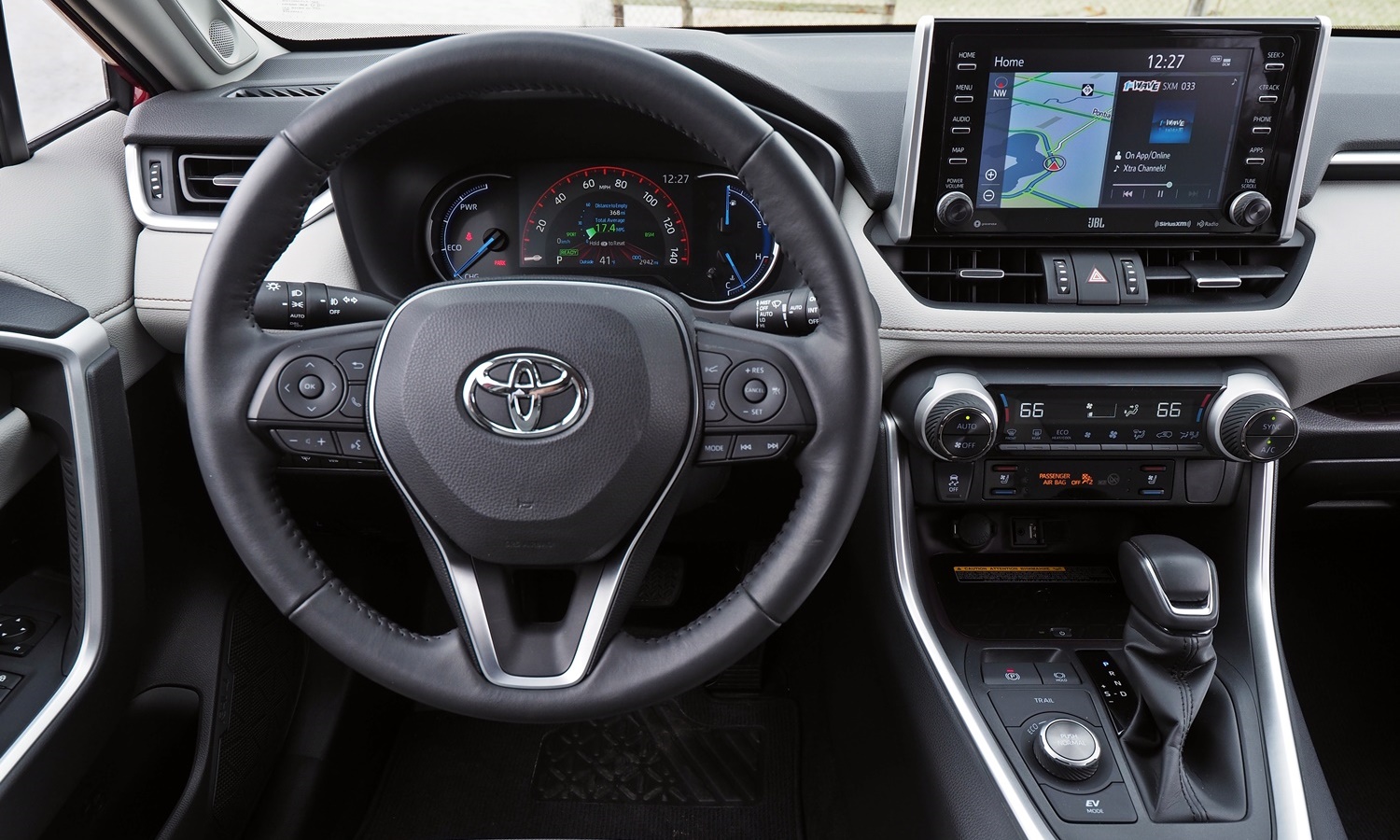
Well-designed controls, with knobs for major functions.
| Exterior styling |
 Better
Worse
Better
Worse
|
The 2013 RAV4 suffered from Toyota's tendency to artlessly overcook the styling of its cars. The 2019 RAV4, while not pretty, has few "what were they thinking?" details and could pass for a handsome Jeep SUV when viewed from the side. While I initially felt Toyota was trying too hard to make the new RAV4 look like a rugged truck, the more I look at it the more I like it.
I especially like how all of the angles and the character lines in the fenders work together to make the body side appear dynamic (a word overused by German auto makers, but warranted here). "Together" is the key word. There's a lot going on here, yet none of it strikes me as extraneous. Note how the upper surface of the front fender mirrors that of the rear fender. And then how the latter bends around a character line to angle forward up the D-pillar, the whole forming a subtle arrow. The wheel openings have cladding around them, but this cladding doesn't continue all of the way to the bottom, permitting some body-color paint to reach the edges of the wheel openings. As a result, the wheel openings don't look like huge gaping holes the way they do on many becladded crossovers.
Some details have a less clear purpose. Chrome trim outlines only the top edge of the windows. In most other cases it outlines the side windows entirely or runs along only the bottom edge. A black piece of trim separates the A-pillar from the fender.
Both of these might serve to increase the apparent length and reduce the apparent height of the new RAV4. Other exterior design elements definitely do. Thanks to the new styling, the 2019 RAV4 appears larger than the 2013-2018, but it's actually less lengthy (180.9 vs. 183.5 inches) and only an inch taller (67.0 vs. 65.9 inches).
The Forester has more awkward proportions and squarer, less sporty styling. It's less than an inch taller than the RAV4, but appears considerably taller.
Toyota's interior designers also managed to control themselves. The new interior looks much more cohesive and simply better than the 2013-2016 RAV4's. Here as well the theme is "rugged truck," with chunky door pulls and heavy rubber trim bits. But despite an above-average number of padded and stitched panels, the atmosphere remains somehow synthetic and even sterile. Perhaps blame is due the light gray upholstery of the tested car (which pairs uncomfortably with bronze stitching). The interior should look better in either of the other two options, black and tan. The Forester's interior seems nicer. The CX-5's seems much more upscale.
This said, I do like the rugged character conveyed by the rubber trim employed on the knobs and door pulls.
| |
Compared to the Forester |
| Quietness |
 Better
Worse
Better
Worse
|
The latest Toyota RAV4 does many things well beyond fuel economy, reliability, and styling--but so do many competitors. So those are the only areas where it stands out in the crowded compact crossover field. (And styling, being more subjective than the other two, is debatable.)
On the flip side, the new RAV4 does virtually nothing poorly. Seeking out some "cons," I'll note that road noise seems higher than the class average, and at highway speeds wind noise joins it. The latest Forester and Chevrolet Equinox seem quieter inside. The second-generation Mazda CX-5 seems much quieter. This isn't to say the RAV4 is noisy. Only not as quiet as some competitors.
| Front seat support & comfort |
 Better
Worse
Better
Worse
|
I initially noted that the well-bolstered driver seat felt "ok." But after a few hours in it my rear started to feel sore.
To be fair, I haven't had enough seat time in competitors to state that they fit me better. And even if they do, this could just be me. People come in many different shapes and sizes, have different postures, and so forth. Pity seat designers! The upshot: no one else can tell you how comfortable a seat will be for you. Make the test drive as long as you can before buying.
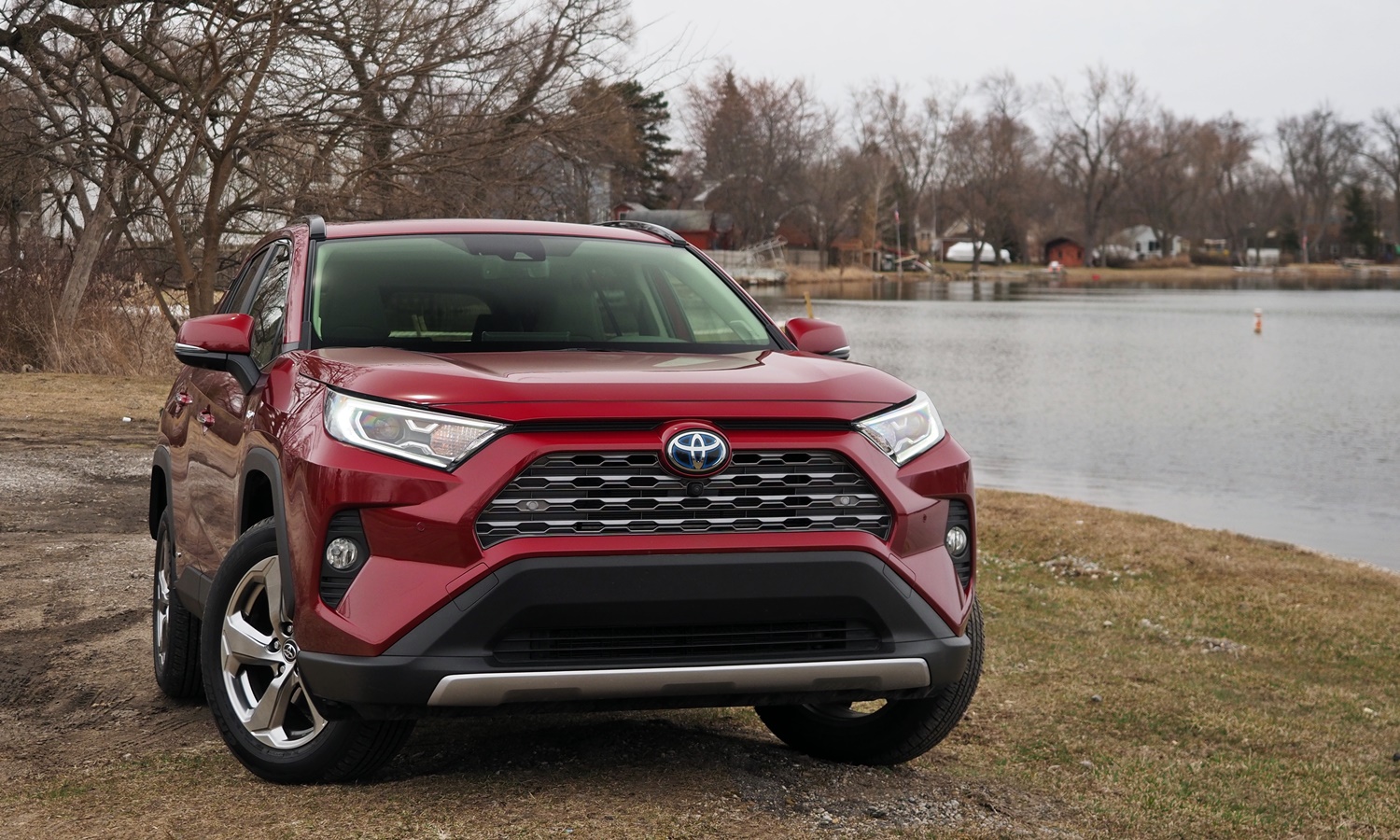
A Toyota SUV, so it has an aggressive face. But at least all of the parts form a coherent whole.
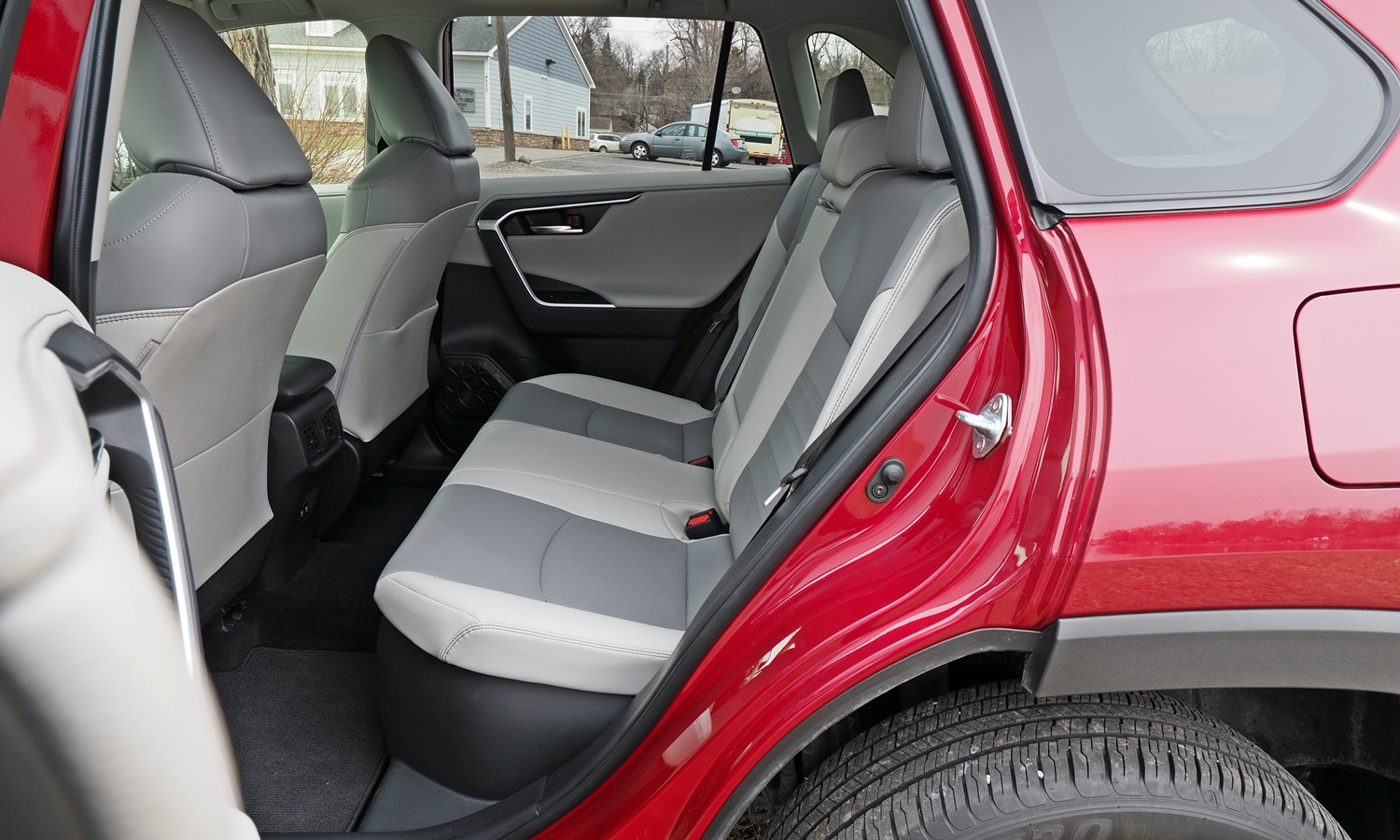
Not quite the roomiest rear seat in a compact crossover, but close.
I didn't test either vehicle off-road. The RAV4, RAV4 Hybrid, and Forester all have traction control modes for off-roading. Subaru has a reputation for fielding more off-road-capable crossovers, but without testing I cannot state how much this reputation remains deserved. Neither should be able to match the capability of a Jeep Trailhawk model, each of which has at least quasi-low-range gearing if not a true low-range. At a minimum, anyone who wants to off-road their RAV4 will want different tires than the Dunlop Grandtreks on the tested vehicle.
| |
Compared to the Forester |
| Powertrain performance |
 Better
Worse
Better
Worse
|
Like the Camry Hybrid with which it shares a hybridized 2.5-liter four-cylinder engine (good for 219 combined horsepower), the RAV4 Hybrid can get from a dead stop to 60 mph in under eight seconds--pretty quick. But it doesn't sound or feel pleasant when rushed. For the optimal experience in a Toyota Hybrid, drive it casually. In typical daily driving the electric motors nicely supplement the marginal low-end torque of the gas engine, yielding quieter, more relaxed acceleration than in the more rev-dependent 203-horsepower non-hybrid RAV4.
How many compact crossover owners require quick acceleration, anyway? Subaru didn't even bother to offer its turbo engine in the redesigned 2019 Forester. With its 182-horsepower engine, the Forester isn't as quick as the RAV4 Hybrid. But it's still quick enough for nearly all driving.
If you do want a seriously quick sub-premium compact crossover, check out the upper trim levels of the 2019 Mazda CX-5, which I'll be reviewing next.
| Handling |
 Better
Worse
Better
Worse
|
Toyota gave the 2013 RAV4 surprisingly firm suspension tuning. While this helped the crossover handle responsively, it hurt ride quality. People complained. With a 2016 refresh Toyota softened the suspension to the point of mushiness. The 2019 strikes a pretty good balance between the 2013 and 2016. Its handling initially feels semi-sporty. But take a curve quickly and the new RAV4 leans much more than a truly sport-tuned crossover.
The Subaru Forester doesn't even pretend to offer sporty handling. Its significantly softer suspension soaks up bumps much better than the RAV4's. In turns the Forester leans more than the RAV4. Yet its ride and handling feel controlled, polished, and appropriate for the vehicle. I found the Subaru more pleasant to drive, if less sporty (this being quite relative).
| Driving position & visibility |
 Better
Worse
Better
Worse
|
The new RAV4 provides very good outward visibility thanks to a moderately raked windshield and larger-than-average windows. But the Forester continues to provide outstanding outward visibility, and thus retains an advantage here.
| Rear seat room & comfort |
 Better
Worse
Better
Worse
|
The Toyota RAV4, like most current compact crossovers, provides all of the space for people and cargo that most buyers will need. Here as well, though, the Forester does a bit better.
| Price or payments |
 Better
Worse
Better
Worse
|
The tested Toyota RAV4 Hybrid, a top-trim Limited with nearly all of the boxes checked, lists for $39,765. A RAV4 Hybrid LE lists for much less, $28,945. In either trim the RAV4 Hybrid costs only $800 more than a non-hybrid RAV4 with AWD. How can they charge so little? Well, the rear wheels are driven entirely by an electric motor, so there's no need for a viscous coupling, rear differential, or drive shaft.
But the price of the non-hybrid RAV4 isn't terribly competitive. The Subaru Forester (with AWD standard) starts at $25,270. Spring for the top-trim Touring and the sticker reads $35,270. Both prices are a few thousand less than a comparable RAV4.
The non-hybrid 2019 Toyota RAV4, while an improvement over the 2013-2018, isn't quite as good as the new Subaru Forester in most areas. But it's definitely in the same ballpark. Both are very good all-around vehicles for people seeking a roomy, comfortable, pleasant-to-drive crossover. Plus, thanks to inspiration from Jeep, the new RAV4 arguably looks better, at least on the outside.
But Subaru doesn't offer the Forester as a hybrid. Meanwhile, the redesigned RAV4 Hybrid gets much better fuel economy than its predecessor.
Ford will offer an all-new Escape as a hybrid in a few months. But I wouldn't expect Toyota-level reliability from it, especially not in the first model year or two.
The RAV4 might cost a little more to purchase, but thanks to Toyota's rep for reliability you'll get more when you sell or trade it. As such, it's a good value, especially in hybrid form. Want an all-wheel-drive crossover with room for four adults and their stuff, that can go over 40 miles on a gallon of gas, and that should be reliable for over a decade? This is it.
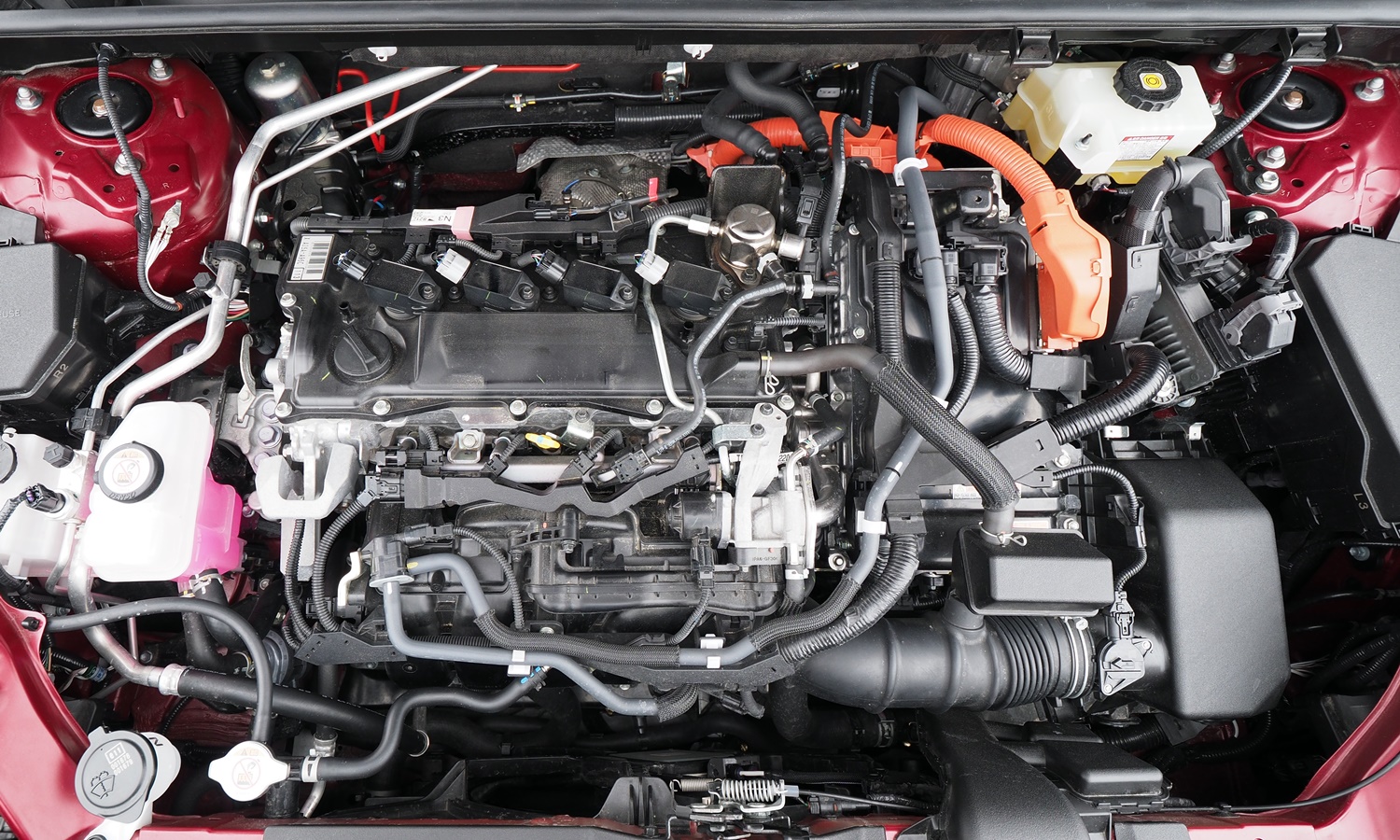
176-hp gas engine and 118-hp electric motor combine for 219 peak horsepower, vs. 203 in non-hybrid.

74 inches of floor behind the driver seat--among the class leaders.
See more 2019 Toyota RAV4 photos
Toyota provided an insured car for a week with a tank of gas.











